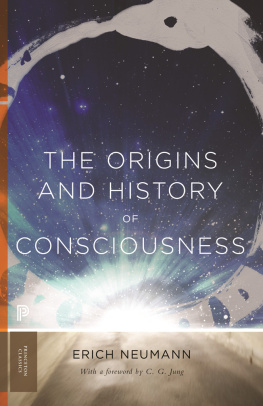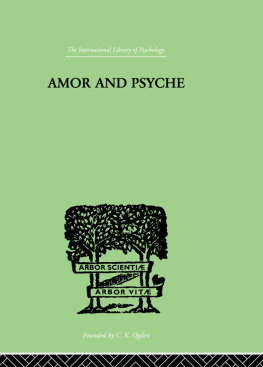BOLLINGEN SERIES XLVII


ISIS
Tomb of Thutmosis IV, Thebes, XVIII Dynasty
THE GREAT MOTHER
AN ANALYSIS OF THE ARCHETYPE
BY
ERICH NEUMANN

Translated from the German by
RALPH MANHEIM
With a new foreword by
MARTIN LIEBSCHER
BOLLINGEN SERIES XLVII
PRINCETON UNIVERSITY PRESS
PRINCETON AND OXFORD
Copyright 1955 1963 by Bollingen Foundation Inc., New York, NY;
Copyright Renewed 1983 by Princeton University Press
New foreword by Martin Liebscher copyright 2015 by Princeton University Press
Published by Princeton University Press, 41 William Street,
Princeton, New Jersey 08540
In the United Kingdom: 6 Oxford Street, Woodstock,
Oxfordshire OX20 1TW
All Rights Reserved
press.princeton.edu
Second Edition, 1963
First Princeton/Bollingen Paperback Edition, 1972
First Princeton Classics Edition, with a new foreword by Martin Liebscher, 2015
This is the forty-seventh in a series of works sponsored by Bollingen Foundation
Paperback ISBN: 978-0-691-16607-0
Library of Congress Control Number: 2015930406
Printed on acid-free paper.
Printed in the United States of America
1 3 5 7 9 10 8 6 4 2
To C. G. Jung
FRIEND AND MASTER
IN HIS EIGHTIETH YEAR
FOREWORD TO THE PRINCETON CLASSICS EDITION
Bachofen is overall a treasure chest of psychological knowledge, if one understands himhis merits as an historian asideas a modern researcher of the soul, something he himself was not aware of. For instance, as soon as you read the tellurian [= chthonic or earth centred] region as the unconscious and oppose it to the uranian region of consciousness, all of his findingsinterpreted symbolically and not historicallygain a new and highly modern significance.
T HIS PRAISE of the Swiss scholar Johann Jakob Bachofen, whose study Mother Right: An Investigation of the Religious and Juridical Character of Matriarchy in the Ancient World (1861) can be seen as the foundational text of modern theories of matriarchy, was written by the German-born Jewish psychologist Erich Neumann (19051960). The passage originates from an unpublished manuscript on the Jakob-Esau brother motif and was written during Neumanns first years in British Mandate Palestine, where he had migrated in 1934.
After the Nazis had seized power in Germany, Neumann, a dedicated Zionist since his youth, left Berlin with his family in the autumn of 1933 to settle in Tel-Aviv for good. He briefly interrupted his journey, until May 1934, to study with Carl Gustav Jung in Zurich. These few months not only qualified the young man, who had just finished his study of medicine and held a university degree in psychology and philosophy, to practice as a psychotherapist, but also formed the beginning of a friendship and correspondence with the Swiss psychologist that lasted until Neumanns death.
The above passage is significant as it shows that Neumann was acquainted with Bachofens thoughts on ancient mother cults long before his own major works on that theme, On the Origins and History of Consciousness (1949) and the collection of essays The Fear of the Feminine (1953), appeared. But Neumanns main monograph on this subject is The Great Mother (1955), which is now available to a new generation of readers. The book opens with a quotation from Bachofens preface to The Myth of Tanaquil (1870): We must raise our aspirations to their very limit if we would not fall short of them (p. lvi). Bachofen could not have been more accurate in regard to his own writings: though his theory of a cultural evolution, which developed from the female-dominated epochs of hetaerism and the mother right through to the male-dominated cultures of Dionysos and Apollo, was criticized and rejected by most contemporary historians, it nevertheless asserted its influence on a number of important thinkers ranging in their diversity from Friedrich Nietzsche to Friedrich Engels. But it was psychological theoreticians especially, such as Joseph Campbell and Erich Neumann, who, in the wake of C. G. Jung, tried to rescue Bachofens concept of an age of gynaecocracy through a psychological revision. Their attempts were solidly based on the archetypal theory of Jung, who had himself written a substantial piece on that subject entitled Psychological Aspects of the Mother Archetype.
Jungs article originated from the Eranos conference of 1938, which was dedicated to The Nature and Cult of the Great Mother. To accompany the conference, an exhibition was put together that displayed different mythological, religious, and artistic depictions of the Great Mother. In his contribution Jung stayed on the surface of the archetypical cultural manifestations and concentrated mainly on their psychological implications in regard to the mother complex. Neumann, in his later study, expanded Jungs original research through a detailed examination of the different archetypal appearances of the Great Mother in mythology and religion.
During the war, Neumanns contact with Jung was interrupted. It was in those difficult years of isolation that Neumann wrote two of his best known state via the age of the Great Mother toward the patriarchal cultures of ego emancipation. Little surprise that Neumanns chapter on the Great Mother opens with a reference to Bachofen: The world experienced by the waking ego of humanity is the world of J. J. Bachofens matriarchate with its goddesses of motherhood and destiny. The wicked, devouring mother and the good mother lavishing affection are two sides of the great uroboric Mother Goddess who reigns over this psychic state (On the Origins and History of Consciousness, p. 39). The chapter contains Neumanns first attempt at a thorough differentiation of the archetype on which he based his later elaborations in The Great Mother.
Jung had seen a draft version of On the Origins and History of Consciousness and recommended Neumann to Olga Frbe-Kapteyn, the Dutch organizer of the Eranos conference, who was looking for someone to write an introduction to the first Bollingen publication of material from the Eranos picture archive. The chosen topic was the archetype of the Great Mother, as there was sufficient pictorial material available from the 1938 exhibition. Frbe-Kapteyn outlined the task in her letter to Neumann of 30 October 1947: Even before the war, the Bollingen Foundation planned to publish a series of publications from the Eranos picture archive. They will each consist of around 100 images in large format with a foreword. All images of each volume must relate to a single archetype or primitive image. I have proposed that we commence with the archetype of the Great Mother. Neumann accepted the proposal, which also included financial support from the Bollingen Foundation, but instead of providing an introduction to a catalogue of images he wrote a book in its own right, illustrated with the images. He finished the manuscript in 1951 and the book was published in the Bollingen Series in 1955.
Neumanns The Great Mother provided a watershed moment in the way archetypal studies would be conducted. There was certainly no shortage
It is therefore important today to read Neumanns study not as a contribution to a failed archaeological theory of an ancient cult of the Goddess, but as an exemplary study of archetypal psychology. Similar to Neumanns psychological re-evaluation of Bachofens theory, the text speaks to us through the amplification of the archetypal material and helps to explain the primal fears and protective characteristics that are attributed to the Great Mother. Such a polarity of the projection of male fantasies is not only linked with Jungs anima theory but also finds parallels in Otto Weiningers dichotomy of the holy mother Maria and the Greek hetaera (1903) or in Sigmund Freuds concept of castration anxiety and the description of the male neurotic in On the Universal Tendency of Debasement in the Sphere of Love (1912). But male anxiety and projective fantasies were not of interest only to depth-psychology. In his study on masochism, Cold and Cruelty (1967), the anti-Freudian philosopher Gilles Deleuze returns to Bachofens evolutionary model of matriarchy. Though Neumann is not explicitly mentioned, his psychological and archetypal re-evaluation of Bachofen can be recognized in Deleuzes differentiation of the uterine, the oedipal, and the oral mother.
Next page











